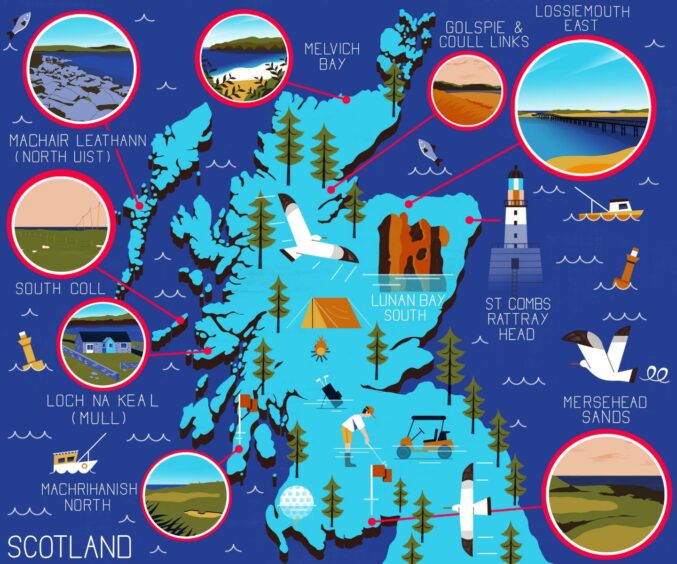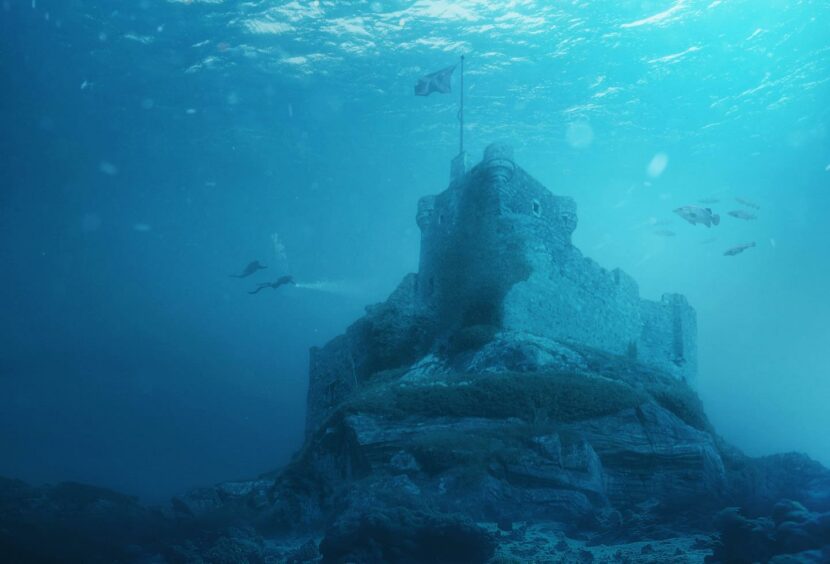Some of northern Scotland’s best loved beauty spots are at risk of severe coastal erosion due to climate change, a new Glasgow University study has revealed.
The team undertook a Scotland-wide analysis of coastal erosion risk, looking at sites that will soon shrink through the impacts of sea level rise, and coastal flooding.
Among the top 10 at risk areas at St Combs to Rattray Head, near Fraserburgh; Machair Leathan, North Uist; Melvich Bay, Sutherland and Lossiemouth East Beach.
These areas have been included on a map, commissioned by outdoor brand Vango as part of its ongoing commitment to sustainability and raising awareness of climate change.
The scientifically-backed map features some of Scotland’s most beautiful wild camping locations and areas of historic significance, including the sweeping sand dunes of Golspie Links, Lunan Bay in Angus, and the idyllic inlets on the Caithness coast, including Strathy and nearby Melvich.
It is estimated that all of the featured locations will be under increased threat from rising sea levels and extreme weather conditions by 2050 and beyond.
Map is ‘just a snapshot’ of locations under threat
Larissa Naylor, professor of geomorphology and environmental geography at Glasgow University, said: “Even with net zero our sea levels will continue to rise and continue to erode key coastal assets like wild camping beaches and critical transport infrastructure. It is thus imperative that we act now to, in the first instance, achieve net zero (and beyond) rapidly and secondly, adapt society to better live with coastal climate change impacts like flooding and erosion.
“The map is just a snapshot of some of the locations under threat – the tip of the iceberg.”
As part of its awareness campaign, Vango has unveiled a series of creatively inspired CGI images depicting an imagined, dystopian sunken world beyond 2300.
One includes Castle Tioram on the tidal island of Eilean Tioram in Loch Moidart, Lochaber. Currently, the castle is accessed on foot at low tide, but is anticipated to be inaccessible from the land by 2100, along with the loss of local wild camping sites along the Ardnamurchan coast.
Real concern about Scotland’s ‘depleting’ outdoor space
Record-breaking cyclist Mark Beaumont, who is a climate change supporter and a long standing ambassador for Vango, said: “This map is a stark warning that the issue of climate change, and its impact on our precious outdoors, is very real.
“2050 is not so far away, especially when I think of the lifetimes of my children and how they can enjoy the great outdoors. So I would encourage people to get out to these incredible sites – see them, appreciate them and understand that unless we take collective action, they could soon disappear.”
During COP26, Mr Beaumont and Markus Stitz will be completing a gravel ride around Glasgow, to promote the benefits of seeing local areas in new ways, connecting with the outdoors through adventure.
Rob Birrell, Vango’s marketing director, said: “Scotland is famous for its scenic wild places and uplifting sense of remoteness, but sadly some of our most beautiful wild camping spots and beaches are seriously at risk and shrinking. By sharing this new map, it is our hope that we will spotlight a very real concern about Scotland’s depleting outdoor space – and, ultimately, drive people and politicians to take action now.”


